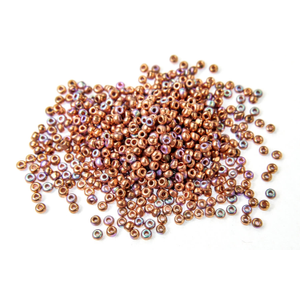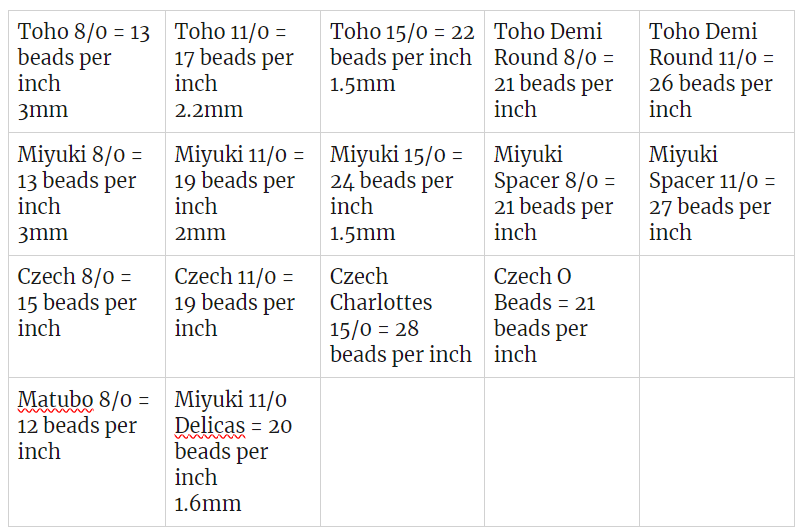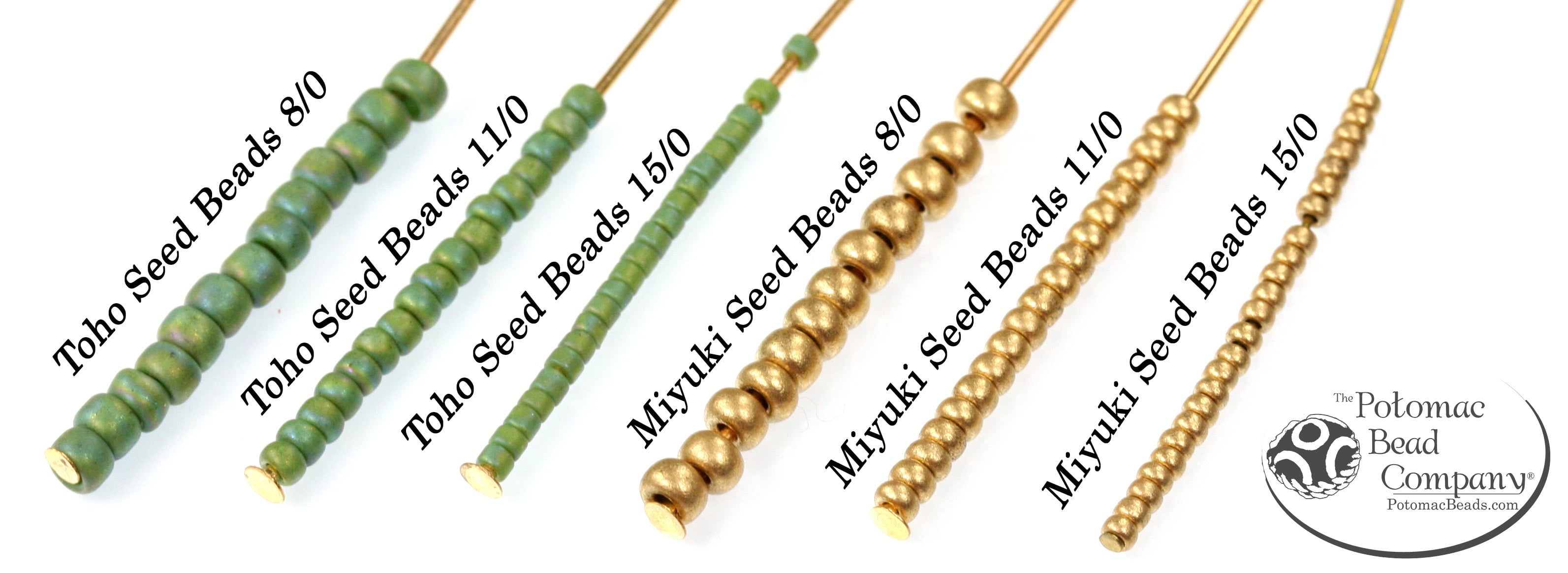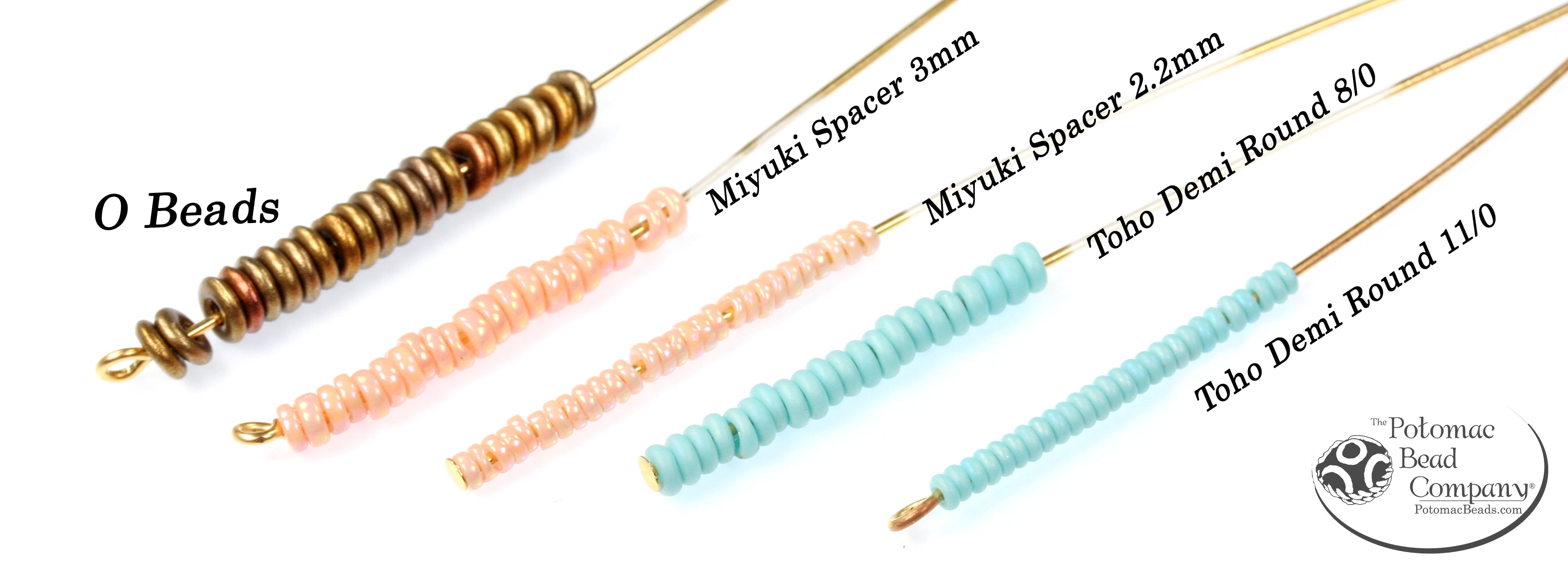- Jewelry-Making Supplies ▾
Design Jewelry with Confidence!
Seed Beads
Thread, Wire, & Stringing Materials
Findings & Components
Everything Else
- Kits & Collections ▾
Assemble Your World
Kits & Collections
- Subscriptions ▾
Want monthly Beading Happiness?
Subscriptions
- Learn to Make ▾
Want to learn more?
- Discounts & Deals ▾
Explore Today's Promotions!
-
Seed Beads
Thread, Wire, & Stringing Materials
Findings & Components
Everything Else
-
Kits & Collections
-
Subscriptions
Seed Bead Sizing in the 21st Century
PAGE VARIABLES - ONLY VISIBLE ON EDIT MODE *
Subtitle
Recently, in the Potomac Bead Company’s private Facebook group, someone asked “What does the number mean when referencing seed beads?” So I set out to answer the sizing question in depth during a Facebook live session...
I work with these little marvels of glass every day and still had to do some research before having a detailed answer to provide fellow beaders. Traditionally speaking, the number associated with the size of the seed bead has been explained to me time and time again as the number of beads per inch. For example, in the 1800s when the sizing was loosely standardized, an 11/0 seed bead meant that there were approximately 11 tiny glass beads per inch, 8/0 has 8, ect. However, that was in the 1800s. Today production has become much more technologically advanced and precise, so these classic figures are no longer accurate.
Blog Date
Blog Author
Blog Tags
Blog Category
bodyHtml
Notes: Only visible on edit mode. Update the variables above > save > then reload the page to load the values.

Short Desc and Page Image for the thumbnails showing on other pages.

Recently, in the Potomac Bead Company’s private Facebook group, someone asked “What does the number mean when referencing seed beads?” So I set out to answer the sizing question in depth during a Facebook live session...
I work with these little marvels of glass every day and still had to do some research before having a detailed answer to provide fellow beaders. Traditionally speaking, the number associated with the size of the seed bead has been explained to me time and time again as the number of beads per inch. For example, in the 1800s when the sizing was loosely standardized, an 11/0 seed bead meant that there were approximately 11 tiny glass beads per inch, 8/0 has 8, ect. However, that was in the 1800s. Today production has become much more technologically advanced and precise, so these classic figures are no longer accurate.
In the pictures below, you can see the early 1900; Vintage strung seed beads (left) versus the Japanese, Miyuki 11/0 seed beads (right) in current production. Notice how the vintage seed beads are so inconsistent in size and even in shape compared to the modern Japanese beads. Obviously, this will affect the actual size of the beads even though they may both be labeled as 11/0 seed beads.


After sharing this information, I had a comment on the Live video (https://www.facebook.com/PotomacBeadCompany/videos/10156140203078578/) that stated the measurement should be done with the beads lying hole side sitting up. I have never heard this as a measurement standard but thought I would look into it and do a little testing myself. I could not find any historical information that verified this point of view, BUT, when laid on their side, the seed beads did have the number per inch closer to their size descriptions. This is still not an accurate number. For example, the Miyuki brand size 11/0 (which I tend to prefer) have 13 beads per inch when measured this way. There is also historical thinking that the actual size of seed beads may have been named after the size of metal rod being used to create them. Again we do not have significant data to determine this one way or the other.
For all design purposes however, I prefer to know the number of beads per inch when strung... after all it is the thickness of a bead that will generally determine how it works in a pattern. Determining these measurements will answer the next question, "are different brands of seed beads interchangeable in patterns?"
With this in mind, I set out to determine how accurate are the numbers associated with the sizing of seed beads -- How do different seed beads vary by the most popular manufactures? I took a head pin and grabbed a tube of each of the post popular sizes, and further the different sizes across brands. The cart and pictures below show the results of this stringing. Obviously, there was a difference in the number of beads per inch by sizes, but also by manufacturer.


The difference in the number of beads per inch varied enough for me to conclude that there is not an actual industry standard, rather a manufacturer standard for each size. Yes, an 11/0 seed bead is roughly the same size across the board, but there are slight size differences. In additional to a slight difference in the size of the beads and number per inch by manufacturer, the hole sizes of the beads also differ based on brand. Across all of their sizes, Toho seed beads have a larger hole then the competitor brands, (Miyuki and the Czech seed beads). This means that the wall of the seed bead is generally more cylindrical on a Toho seed bead vs. a Miyuki seed bead of the “same” size. Additionally, due to this larger hole, the Toho 15/0 seed bead is much less rounded then the Miyuki 15/0 and looks more cylindrical.

The biggest variation of the size is actually in the smallest bead. The 15/0 size seed bead has the greatest variance in the number of beads per inch based on the manufacturer. Why does this matter? For most projects, Toho and Miyuki brand seed beads size 8/0 & 11/0 can be used interchangeably with very little impact on the final look of the piece. However, I have found that the difference in the shape and the size of the 15/0 seed bead can impact the design. Therefore, if a pattern calls for a specific brand of 15/0 seed, this will make a significant impact on the design of the piece.
Also, while testing out the size 8, 11, and 15 sized seed beads I also grabbed a tube of the newer, thinner, Demi Rounds by Toho and the Spacer Beads by Miyuki. These two beads are a slimmer versions of their most popular sizes, the 8/0 and 11/0. They are essentially, the original seed bead sliced in half. Fortunately in this case, the sizes are almost identical. This makes it very easy to use a Demi Round in place of a Spacer bead or vice versa.

Similar in shape to the Toho Demi Round and the Miyuki Spacer bead is the Czech O Bead. While measuring and testing which beads are interchangeable, I also examined how many of the O beads stack in an inch to compare it the Japanese versions.
I also tested the Miyuki Delica bead in 11/0. The Delica bead is, in my option, the most precise bead manufactured and has little to no imperfections in a tube. The Delica bead is tubular in shape vs. the more rounded shape of a standard seed bead. Miyuki Delica does not have a real replacement option when a pattern calls for it to be used. Do not attempt to use any other 11/0 seed bead because it will not have the same look and may not work for many patterns.
Overall, finding out how many seed beads where in an inch across the major brands and sizes is incredibly helpful. While the number of beads per inch may not be exactly 8, 11, 15 ect. the sizes across the brands is fairly consistent. In many patterns, designs or ideas, Toho, Miyuki, & Matubo (Czech) seed beads will be fairly interchangeable. Regardless of how the idea for seed bead "8/0" "11/0" "15/0" sizing evolved over several hundred years, I am very happy we have sooo many styles of seed beads today. These tiny beauties are the fuel to our creativity, and the bead world would not be the same without them!
Happy beading!
-Allie Buchman
PotomacBeads.com
Resources
Miyuki Bead Sizing Chart:

Toho Bead Sizing Chart

Highest Quality
Products
100% Money
Back Guarantee
Fast
Shipping
Best Teaching &
Customer Service
You'll want these emails...
Get Free Projects & Inspiration
Get Free Projects & Inspiration
- Bullet 1
- Bullet 2
- Bullet 3
-Transparent.png)
240 N Prospect St. Hagerstown, MD 21740
(301) 393-4667
hello@potomacbeads.com
Copyright © PotomacBeads
